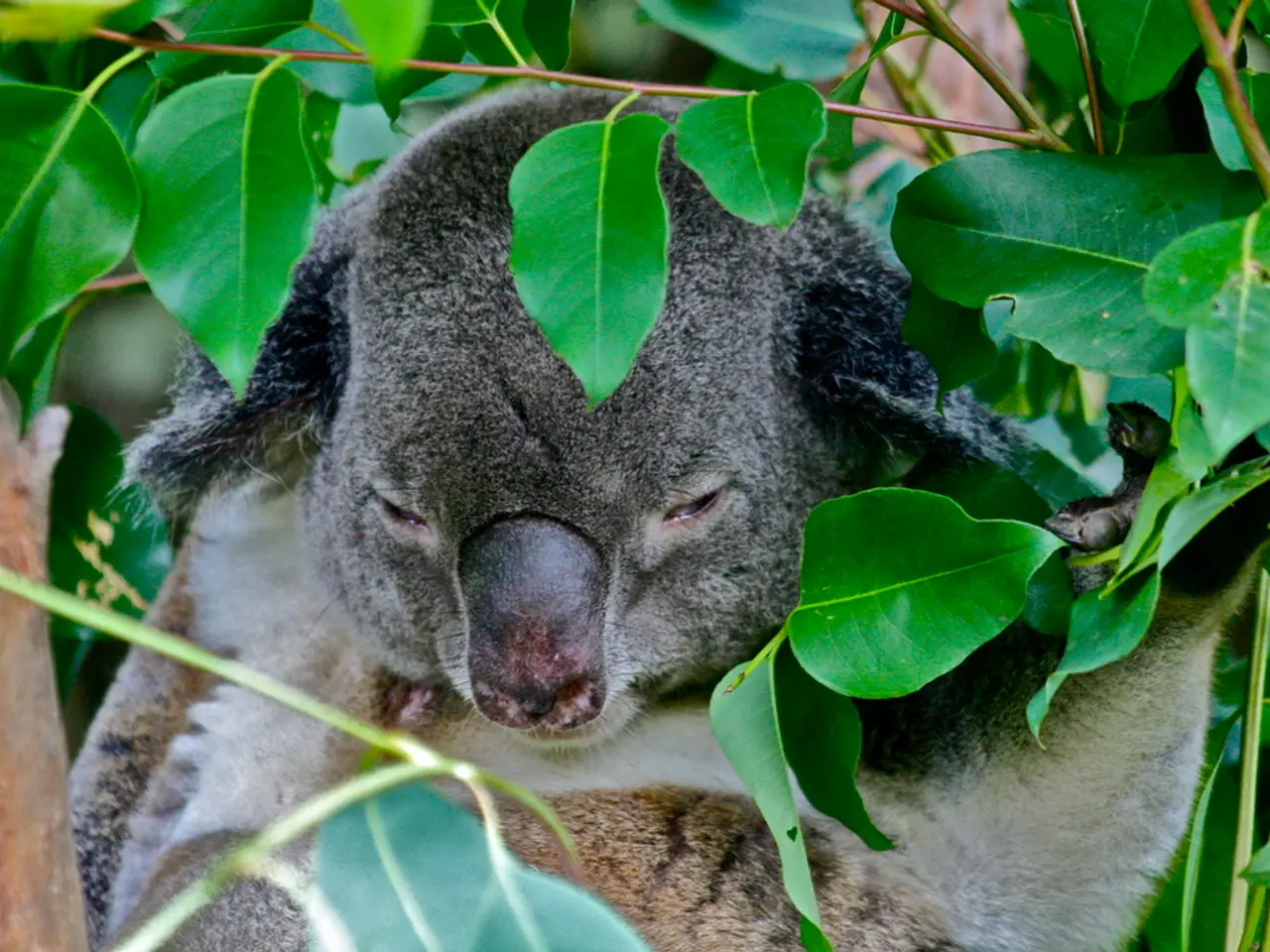Logging operations stopped in East Coast Australia for a koala sanctuary
The New South Wales government has made a significant move towards the conservation of the local koala population by imposing a logging ban on 176,000 hectares of forest, paving the way for the creation of the Great Koala National Park.
First announced in 2023, the park was initially intended to protect only 8,400 hectares of forest. However, the expanded ban is a crucial step towards saving the koalas from extinction.
The Great Koala National Park, when connected with existing national parks, would create a 476,000-hectare reserve, serving as a refuge for more than 12,000 koalas, 36,000 greater gliders, and over 100 other threatened species.
The park's leader, Mai Nguyen, a koala specialist and project leader, has been responsible for its planning and implementation. The state government has pledged to invest Aus$6 million to support new tourism and small business opportunities in the area, and has increased funding for the park by an additional Aus$60 million, bringing the total investment to Aus$140 million.
However, the plan for the koala park has not been without criticism. Some have raised concerns about the immediate protection of trees, and the impact on six timber mills and approximately 300 workers.
The logging ban, while a step forward for conservation, is a complex issue. Tony Callinan, New South Wales secretary of the Australian Workers Union, stated, "This is not about being pro or anti koala." Instead, the union has expressed concern that the koala reserve is larger than the state government's own experts had advised, and it would impact local communities.
Despite these concerns, the creation of the Great Koala National Park has been met with praise from environmentalists. The park is a vital step towards protecting Australia's iconic koala population, which, according to the official national koala monitoring programme, numbers between 95,000 and 238,000 in the eastern states of Queensland, New South Wales, and the Australian Capital Territory.
Another 129,000 to 286,000 koalas are estimated to be living in Victoria and South Australia. The decline in koala numbers in New South Wales, due to deforestation, drought, disease, and bushfires, has been significant, with a crash of more than half between 2000 and 2020.
A new development in the plan for the koala park is the federal government's agreement to assess it as a carbon project for improved management of native forest. This could provide a significant boost to the park's conservation efforts, but remains to be seen.
As the Great Koala National Park moves forward, it will undoubtedly be a topic of ongoing debate and discussion. The balance between conservation and industry will be a key consideration, and it is hoped that a solution can be found that benefits both the koalas and the local community.
Read also:
- Understanding Hemorrhagic Gastroenteritis: Key Facts
- Stopping Osteoporosis Treatment: Timeline Considerations
- Tobacco industry's suggested changes on a legislative modification are disregarded by health journalists
- Expanded Community Health Involvement by CK Birla Hospitals, Jaipur, Maintained Through Consistent Outreach Programs Across Rajasthan








